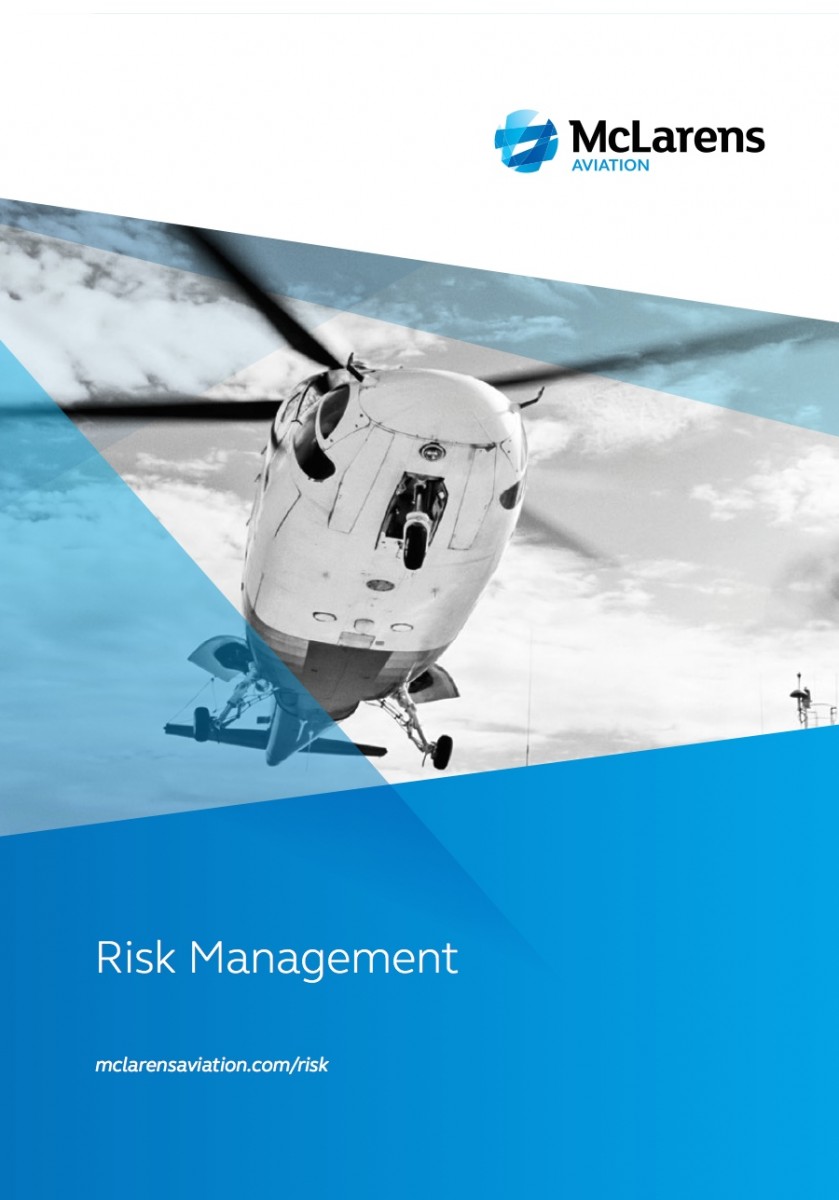The tragic loss of Flight MH370 and the more recent crash of the Virgin Galactic test flight has caused aviation insurance premiums to climb. The scale of the increase is not clear at this point in the renewal season, but figures from JLT’s Plane Talking report for October show combined hull and liability premium is up around 18% for the month, with the majority of airlines that renewed experiencing some degree of premium increase. This figure is expected to increase by the end of the year.As with the premium figures for October, rates were significantly up on the year to date figures. The average combined hull and liability rate change for October was around 13% , with most carriers experiencing some degree of rate increase.
This will be the first significant change in the aviation insurance marketing for some time, which hasn’t seen the scale of major losses for more than 10-20 years when they were more frequent. The advances in technology on aircraft and on the ground have contributed to that safer record, which has made the market very attractive for investors where previously it would have been considered more risky. That safety record has also created capacity in the aviation insurance business that has encouraged competition and driven prices down. Before the past nine months, it was considered a soft market and airlines were benefitting from very good rate prices and the insurance market was seeing a continuous reduction on price year on year. But these last major losses – specifically MH17 and MH370 – has created a change in the pricing scene.
“The aviation insurance market is a solutions driven business and it has a great track record of finding ways to provide cover.” – Paul Clark, McLarens Aviation
The manner at which the Malaysia Airlines aircraft was fatally shot down over Ukraine has caused the insurance community to take stock over war risk policies. Paul Clark, Group Director of Claims, at McLarens Aviation (previously Airclaims until its rebrand earlier in 2014), says: “The war risk market is taking stock and is being cautious in emphasising that cover may not exist for certain areas. As these policies are being renewed with the rest of the portfolio of policies airlines buy, there will inevitably be price and coverage consideration – events will modify what insurers will agree to cover and how. The list of places int eh world that are politically or violently unstable i growing, which will make insurers take a more cautious approach in may cases. One thing to remember about the aviation insurance market though is that it is a solution driven business and it has a great track record of finding ways to provide cover.”
Clark points out that aside from war risk and major losses, there has also been an increase in attritional losses: “While major losses have been much fewer over the recent past, attritional losses – those daily losses in the industry, typically in the $5-$10 million loss bracket – are continuing to increase and technology gets ever more complex. This means the cost of repairing or replacing equipment is rising. Attritional losses – that is the constant level of losses that occur in any given year – are fairly high which is causing the premium base that exists at the moment to be eroded more quickly. This is making insurers aware that costs need to be controlled – claims need to be managed more efficiently, effectively, and technically, which is what we can ensure happens.”
As the world’s largest loss adjuster for the aviation industry, McLarens Aviation, is well placed to advise airlines and aircraft operators on all areas of risk. “Being in the claims business for the past 50 years, we have analysed and reported on tens of thousands of incidents and accidents, which has given us a great understanding of what can happen in these situations and helps us present customers with real world solution to their challenges based upon our depth of experience,” says Clark.
McLarens Aviation also provides operator risk and safety audits, where for example they audit airlines on behalf of the operator itself or third parties such as insurers and end users such as the oil and gas industry who charter aircraft for their corporate travel requirements in high risk areas. The expanding leasing community is also using McLarens Aviation much more for lessee audits following high profile negligent entrustment claims. Negligent entrustment is a cause of action in tort law that arises when one party negligently provides another party with a dangerous instrument, such as a motor vehicle, airplane, or firearm, that it nows or should know the entrusted party is likely to use in a manner involving unreasonable risk to others.
One of the most recent cases is a new lawsuit brought against International lease Finance Corporation (ILFC) by more than 1,000 family members of victims of the fatal 2009 crash of a Yemenia Airlines A310-324 in Comoros, which claims that ILFC is liable under negligent entrustment because it is alleged to have known the aircraft was poorly maintained and that the Yemenia Airlines pilots were incompetent, but it failed to fullfil the provisions of its lease agreement and repossession of the aircraft before the crash occurred. The complaint, filed in the US District Court of the Central District of California, alleges ILFC knew the plane was so poorly maintained thatFrench aviation inspectors banned it from flying into French airspace in 2007 due to safety concerns. The court granted ILFC summary judgement in another suit over the crash in February, and dismissed the claims of dozens of the victim’s family members under the Death on the High Seas Act (DOHSA), finding they had no standing to sue since they had no opened estates in California and had no been designated “legal representatives”. The latest suit however is seeking to have Comorian law apply to the case pursuant to another section of DOHSA that allows cases to be tried in US Federal Court under the law of the country where the deaths occurred. Under Comorian law, victims’ families and heirs are able to sue within a six-year limitation period.
This case and others has “led to a spike in interest from the finance and leasing community for McLarens Aviation to go out and perform pre-lease risk audits on potential high-risk clients to protect themselves from any future negligent entrustment claims,” says Ben Dean, Commercial Director of McLarens Aviation Risk and Asset Management Group. “The focus is making sure the lessee can operate the aircraft safely and has the necessary infrastructure to manage it, with the focus on maintenance and operational capabilities.”
As new capital continues to flow into the aviation industry, McLarens is also seeing an increase in demand for its asset management services. “We have built a strong platform in the area of asset management, which includes everything from aircraft search and selection for start-up operators, to full portfolio management for lessors and financiers that decide to outsource the technical aspects of their work for cost benefits reasons.”
“[There has been] a spike in interest from the finance and leasing community for pre-lease risk audits on potential high-risk clients to protect themselves from any future negligent entrustment claims.” – Ben Dean, McLarens Aviation
Firms such as McLarens Aviation tend to do a lot of work for banks and leasing companies performing asset monitoring inspections, which comprises of a regular check-up on the aircraft and records to ensure it is being operated and maintained in accordance with the lease agreement. This is just one of the proactive measure that an investor can take to mitigate some of the risk int he event of a default scenario and help protect future residual values. “After the major airline failures, there has been a lot of exposure particularly for some of the Export Credit Agencies and organisations that traditionally didn’t have a focus on asset monitoring. The result being they have b
een hit hard with some major bills running into tens of millions of dollars,” say Dean. He adds, however, that repossessions appear to have quietened down at least for the airline side. “Fleet repossessions, after the high profile cases in India where we have been involved in directly, appear to have quietened down, although there are various potential problems on the horizon – Ebola and Icelandic volcanos. Lots of factors could come into play resulting in a perfect storm that could increase the amount of airline failure for those with limited resources.”
In the meantime, as well as attritional losses, airlines and airports specifically are being hit by an increase in liability claims. As a result, McLarens has recently recruited a team of aviation experienced liability adjusters – led by Gareth Jones – to conduct liability work associated with airports – accidents on ramps, terminals for examples as well as those daily events in aviation that create liabilities from slip and fall on the part of a passenger to an accident in the cabin such as a coffee machine exploding or hot coffee being tipped on a passenger. “There is a healthy amount of work in the market,” adds Clark. “We already have a legal team and they will create synergies together and drive growth.”
This article was originally published in the November/December 2014 article in Airline Economics.
To read the article online, click here.
Managing Aviation Risk
Please click the button below to download a copy of this article.





